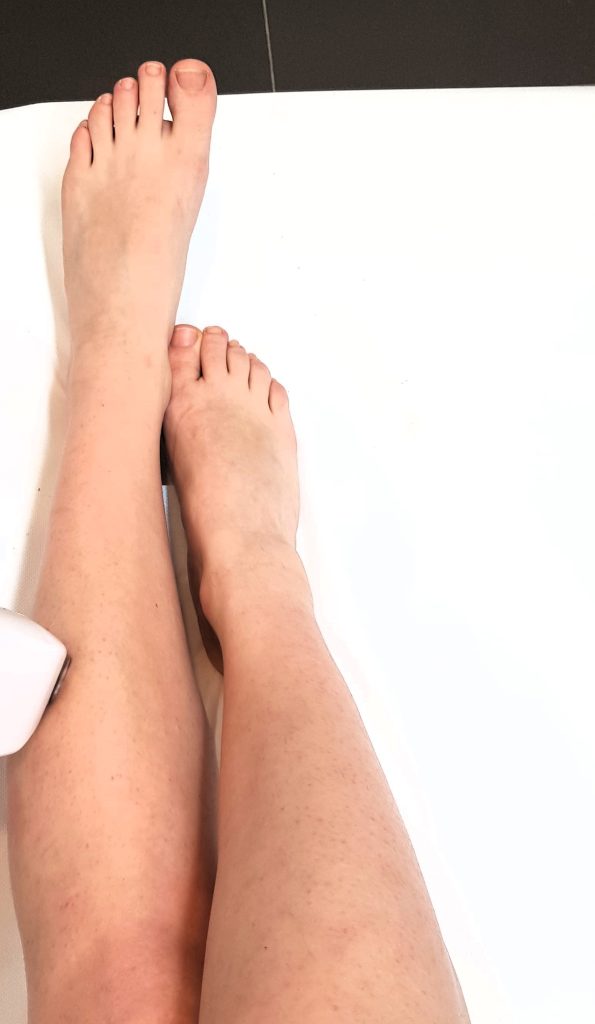Polycystic ovary syndrome and excessive hair: Is depilation a good solution?
Blog BackTable of Contents:
- Causes of excessive hair in PCOS
- Is depilation safe with PCOS?
- Popular methods of depilation for PCOS
- What to look for when choosing a depilation method?

Polycystic ovary syndrome (PCOS) is one of the most common hormonal disorders in women of reproductive age. PCOS affects around 5-10% of women and can lead to a range of unpleasant symptoms, including irregular menstrual cycles, fertility problems, and metabolic disorders. One of the most visible effects of the condition is hirsutism - excessive hair that appears in unusual places such as the face, chest, back, abdomen or thighs.
Causes of excessive hair in PCOS
Hirsutism in PCOS is due to increased levels of androgens - male sex hormones such as testosterone. Although androgens are present in the bodies of both men and women, in women with PCOS their levels are sometimes higher than normal. This hormonal disorder leads to more intense male-type hair growth, i.e. thick, dark and dense hair that appears in areas where it is normally fine or absent.
Is depilation safe with PCOS?
For women with PCOS, excessive hair can be extremely frustrating, so seeking effective methods to remove it is a natural step. The good news is that depilation is safe with PCOS, but it's important to choose the right method for your skin type, hair type and understand that the effect can vary depending on individual needs and hormone levels.
Choosing the right depilation technique depends on several factors:
- Hair type and thickness - women with hirsutism tend to have thicker and darker hair.
- Skin type - some depilation methods may be more irritating for sensitive skin.
- Frequency of hair regrowth - hirsutism causes hair to grow faster, which may require more frequent treatments.
- Duration of effects - it is important to understand that depilation methods will not affect the hormonal causes of excessive hair, but may improve the appearance.
Popular methods of depilation for PCOS
- Shaving
Shaving is the simplest and most readily available method of hair removal. It gives quick results, but unfortunately is short-lived - hair can grow back within a few days. The advantage of shaving is that it is painless, while the disadvantage is the risk of irritation and ingrown hairs. In women with hirsutism, shaving may be necessary every day or every few days, which can be a nuisance for some.
- Wax depilation
Wax depilation is a method that removes the hair from the roots, which means that the effects last longer than after shaving - 3 to 6 weeks. The hair can become thinner over time, although this is not always guaranteed in women with hirsutism. Wax depilation can be painful, especially for the first treatments, and for those with sensitive skin can cause irritation.
- Laser depilation
Laser is one of the most effective methods of reducing excessive hair, especially with dark hair. The treatment involves the destruction of the hair follicle by concentrated laser light, which significantly reduces the amount of hair regrowth. A series of several treatments (usually six to eight) is needed to achieve long-lasting results. However, due to the hormonal basis of hirsutism, hair may grow back after some time, although it will be thinner and lighter.
What to look for when choosing a depilation method?
When choosing a depilation method for PCOS, there are several important considerations to take into account. The skin of women with PCOS can be more sensitive, so it is a good idea to test a small area before treatment to avoid irritation. Some methods, such as shaving or depilatory creams, require more frequent application, which can be cumbersome, while laser or electrolysis provide longer-lasting results. Cost also plays a role - although laser and electrolysis are more expensive, they provide longer lasting results. However, it is important to remember that depilation does not eliminate the cause of hirsutism, so it is worth consulting your doctor to assess your hormonal background.








